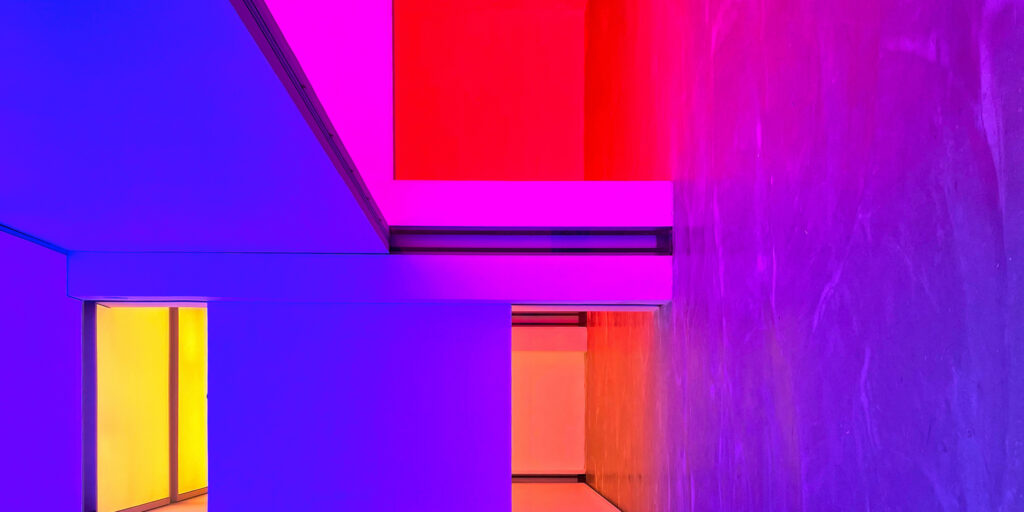BY ELLIE DEES
The world of DMX lighting can be confusing. So many ports, so many channels. What exactly is a chase? A burst? A fade? A trigger? Here are some of the basics of DMX lighting:
What does DMX mean?
DMX stands for Digital Multiplex. It is a protocol for how your lighting gets information or direction from software or a console. DMX was created for entertainment applications like theater and concert lighting but has become much more mainstream as bars, restaurants, hotels, and even business offices and luxury homes employ more smart lighting that can be programmed for different events, moods or times of day. If you daisy chain fixtures, you can program DMX to recognize and control each fixture with pulses of low-voltage electricity.
What is a DMX universe?
A DMX universe is comprised of 512 individual channels. (Hence, the celebration of “DMX Day” on May 12, or 5/12.) More complex DMX controls can direct multiple universes.
What are DMX channels?
DMX channels are used to organize different parameters of light, like color and brightness. The controller sends out assigned data values through each channel to power the LEDs.
What is a DMX address?
The specific number assigned to a fixture (or part of a fixture) is a DMX address. A single-color fixture (static white or static red, for instance) would use a single address. An RGBW fixture would require four addresses — one each for the red, green, blue and white properties of that fixture. Fixtures that share an address will react to the same commands. One DMX universe holds enough room to control 512 single-color fixtures with their own address, or up to 128 RGBW (four color) fixtures. Their addresses would start at 001 and continue to 512.
For example, if you were to daisy chain two RGBW fixtures, the DMX addresses for those fixtures might look like this:
RGBW Fixture #1- Address 001- channel 1 ‘R’
RGBW Fixture #1- Address 001- channel 2 ‘G’
RGBW Fixture #1- Address 001- channel 3 ‘B’
RGBW Fixture #1- Address 001- channel 4 ‘W’
RGBW Fixture #2- Address 005- channel 1 ‘R’
RGBW Fixture #2- Address 005- channel 2 ‘G’
RGBW Fixture #2- Address 005- channel 3 ‘B’
RGBW Fixture #2- Address 005- channel 4 ‘W’
Colors
The DMX protocol allows the three primary colors (red, green, blue) to be combined in each of their 256 different shades. Each LED can be adjusted to blend unique colors, so 256x256x256 = more than 16.777 million different colors.
Scene
A scene is one light setting or event. DMX can be programmed to remember a specific group of settings as a scene.
Chase
A chase is a set of scenes that can be programmed in sequence.
Common DMX effects
Rainbow: color changes throughout
Burst: lighting brightens from inside out
Sweep: lighting moves from left to right
Pulse: brightness changes, like a strobe
Fade: color dims from high to low
Triggers
DMX can be programmed to allow you to control your lighting through timers and calendars or triggers such as sound. Different DMX devices can be set as primary and secondary to follow the same scenes or chase sequences in larger lighting displays (large clubs, full buildings, etc.). This technology is often used to change lighting along with music cues but can also be used to adjust lighting that follows daylight or circadian rhythms.
